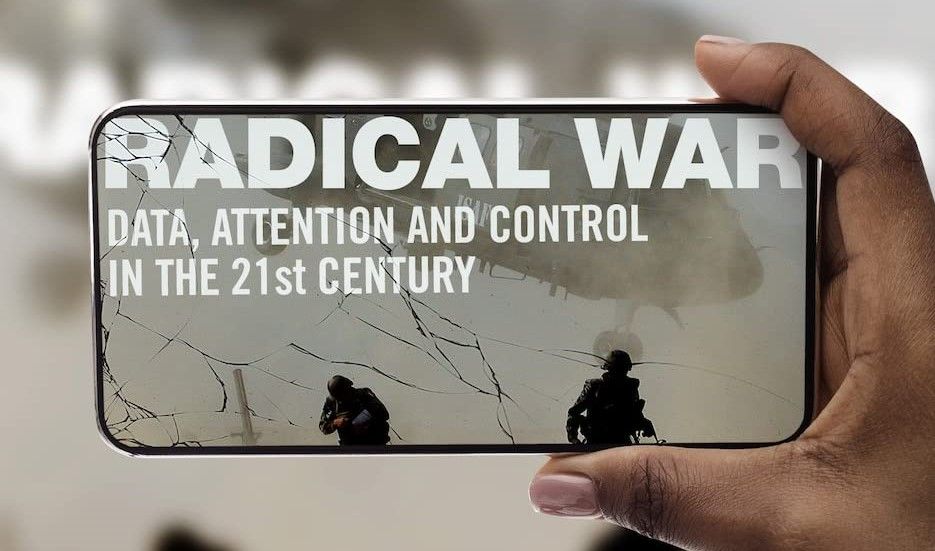The Everyone War
Smartphones have disintermediated the frontline between combatants and civilians.

During the current Ukrainian conflict, the Russian military sent Ukrainian soldiers a mass text message saying that they needed to call home due to an emergency. When the soldiers made the call, the Russian military was able to geolocate and target them with artillery fire. Meanwhile, Russian soldiers killed in action have been identified by Ukranian forces using the face scan on the fallen soldiers' smartphones to unlock their social media accounts (Ford and Hoskins, 2022).
In their eponymously titled book, Dr Matthew Ford and Professor Andrew Hoskins categorise examples of the ever-increasing mediatisation of warfare like those mentioned above under the rubric of Radical War (2022). What is radical about the concept of 'radical war' they put forward is that with the rise of the smartphone anyone with a network signal can take part in the simultaneous production, publishing and consumption of war propaganda and conflict itself (p.197), thereby moving conflict beyond even Derek Gregory's everywhere war with its drones and global surveillance, into an everyone war. Just as social media has disintermediated contact between celebrities and fans, so, too, smartphones have disintermediated the frontline between combatants and civilians. This disintermediation then undermines Clausewitz's trinity of state, people and armed forces.
The ability of the state to direct war loosens as it is overwhelmed by huge amounts of data, and the narrative of war slips from the hands of the government and legacy media into the hands of the smartphone user. Furthermore, modern war conducted at the speed of data undermines the deliberative political decision-making process in war at the strategic level, and escapes the human combatant's response times, giving a further push towards AI and the robotic automation of warfare in an attempt to compensate for human cognitive sluggishness (p.97). This automatisation then serves to further accelerate the destruction of Clausewitz's dictum of war as a continuation of politics by other means, since automated violence could perpetuate itself without any human, political intervention (p.99).
In radical war, the citizenry and the armed forces also become interpenetrated. With a smartphone everyone can not only act as a propagandist for their favoured side, but can also post videos of troop movements and locations, reigning down artillery from above. Concurrently, this also makes them a potential target for ordnance themselves (p.12).
In the aftermath of conflict, historical memory also comes under further attack with the emergence of radical war. While it might be thought that with a proliferation of user-generated content it would be easier to gather evidence and prosecute war crimes, the gigantic amount of archival data actually makes it more difficult to parse and approach the veracity of an alleged war crime (p.30). For example; the 1991 Gulf War generated hundreds of hours of media coverage; the Syrian Civil War generated 40 years of footage in a decade, and the war in Ukraine generated half this amount in its first 80 days. A digital ecology where consumers can subscribe to their favourite narrative of a given war just as easily as accessing Airbnb or Uber leads to an endless cycle of claim and counterclaim (pp.148, 168). Baudrillard famously wrote that the Gulf War did not take place. With the emergence of radical war we may see conflicts that never end.
